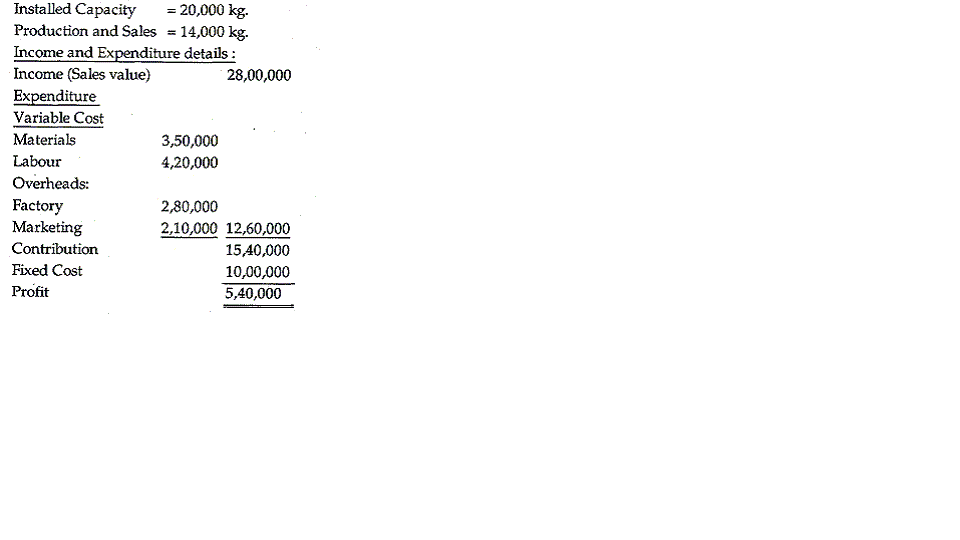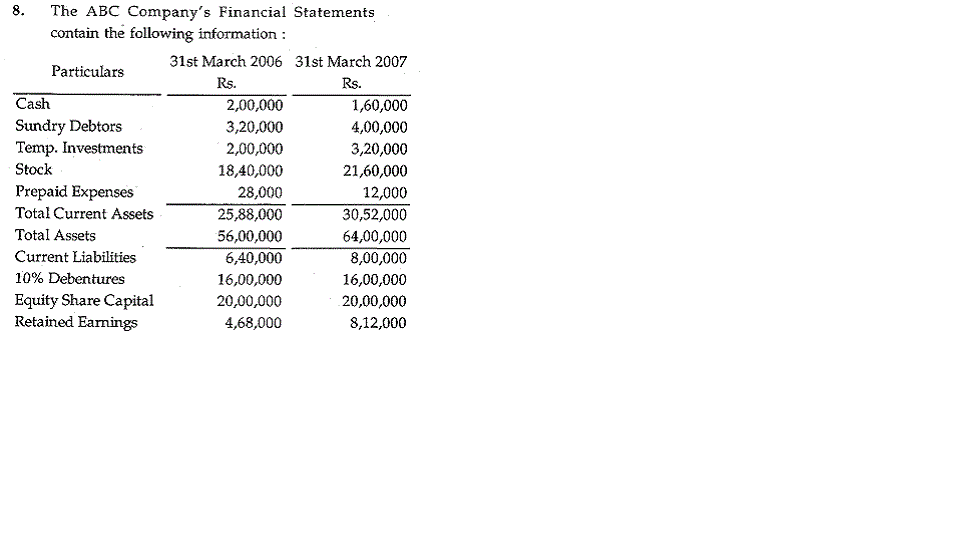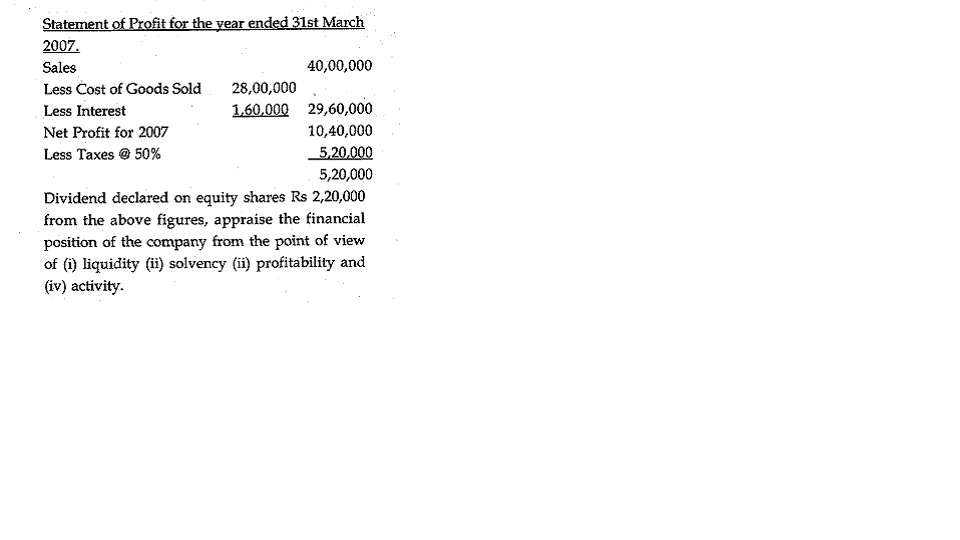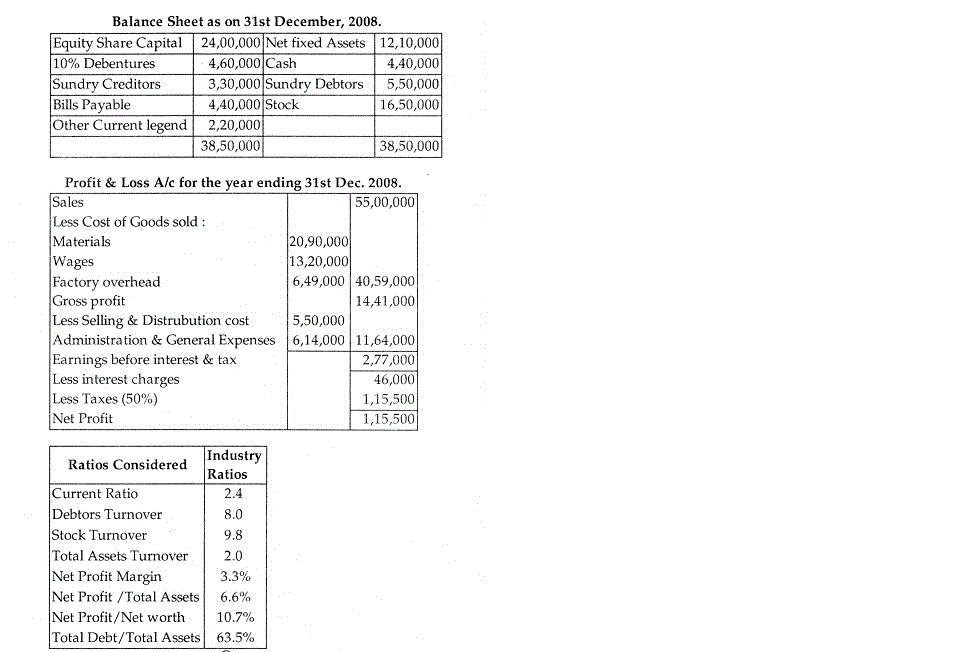
MS-4 Question Bank (10)
MS-4 Question Bank
MS-4 DEC 2008
Written by sales@mbaonlinepapers.com sales@mbaonlinepapers.comMS-4 Dec, 2008
MS-4 : ACCOUNTING AND FINANCE FOR MANAGERS
l. (a) Explain the Money Measurement Concept and the Accrual Concept. What are the limitations of the former concept. Explain.
(b) What do you understand by Accounting Standards ? Why are they necessary ? Explain with examples.
2. (a) Explain First-In First-Out and Last-In First-Out Methods of Inventory Valuation. In an inflationary situation, which method will give higher valuation of the inventory, other things remaining the same ? Explain.
(b) what do you understand by Capitalisation of earnings ? How is the value of a firm ascertained with the help of its earnings. Explain with an example
3. what do you understand by Composite Cost of Capital ? How is it computed ? Explain with an example. How would you support the statement that debt becomes more expensive after a certain point is reached ? Explain.
4. Distinguish between
(a) Preference Shares and Bonus Shares.
(b) Earnings Yield and Dividend Yield.
(c) Sales Price Variance and Sales Volume Variance.
(d) Shut Down Costs and Sunk Costs.
5. The summarised result of the operations of a company for the first year of its existence is glven below:

6.What is meant by Net Present Value ? Why is Profitability Index considered useful ? Discuss the Iimitations of Investment Appraisal Techniques.
7.Explain fully the following statements :
(a) Higher profit margins need not necessarily lead to higher rate of return on investement.
(b) Actual performance can be compared with the budget performance with the help of three ratios.
(c) A high operating leverage is not always desirable.
(d) Dividend, Investment and Financing decisions are inter-dependent


Ms-4 Dec 2009
Written by sales@mbaonlinepapers.com sales@mbaonlinepapers.comMS-4 Dec, 2009
MS-4 : ACCOUNTING AND FINANCE FOR MANAGERS
1. (a) What do you understand by Internal Audit ? How do the functions of an internal auditor differ from that of External Auditor ?
(b) Explain the consistency concept and Accrual Concept of Accounting. How is the Accrual Concept adhered to while preparing the final accounts of a company ?
2. (a) What are intangible assets of a firm ? Why are they shown in the Balance Sheet ? What is meant by amortisation of such assets ? Give reason for the same.
(b) What do you understand by Appropriation of profit of a company ? How are the profits appropriated ? How will the profits to be appropriated, affected, if the company issues debentures, instead of equity shares to finance its activities ? Discuss how ?
3. Distinguish between :
a) FIFO and LIFO methods of Inventory valuation.
b) Rights Shares and Bonus Shares
(c) Direct Material Price Variance and Direct Material Usage Variance
(d) Imputed Costs and Opportunity Costs.
4. What do you understand by Break-even analysis ? Discuss the assumptions underlying the break-even analysis. How do these assumptions make the break-even analysis unrealistic ? Explain and prepare a Break-even chart assuming relevant figures.
5. (a) What do you understand by Flexible Budget ? How does it differ from a Fixed Budget ? Explain its utility to a business organisation.
(b) What do you mean by Control Ratios ? Explain the three important control ratios and discuss their significance.
6. Explain fully the following statements :
a) Operating cycle plays a decisive role in estimating the working capital requirement
of a firm.
b) As there is no explicit cost of retained earnings, they are free of cost.
c) Depreciation acts as a tax shield
d) An investor in shares considers not only its E.P.S. but also P.E. ratio.
7. A company, manufacturing a consumer product and marketing through its network of 400 depots all over the country, is considering closing down the depots and resorting to dealership arrangement. The total turnover of the company is Rs. 200 crore per annum. Average turnover, costs etc in respect of a depot is given below :
Average Turnover Rs. 50 lakh
Average Inventory Rs. 5 lakh
Administration Expenses Rs. 50,000 p.a
Staff Salary Rs. 80,000 p.a
The inventory carrying cost is 16% p.a., which is the rate for working capital finance. Marketing through dealers would involve engaging dealers for each area. The dealers will assure a minimum sale for each area. This would result in increasing the capacity utilisation from 75% as at present to 90%. The Company's P/V Ratio at present is 10% and the Break even point is at 50%of the capacity. Current profit is Rs. 150 lakh. Marketing through dealers would involve payment of a commission of 5% on sales, but 50% of the existing Depot Staff will have to be absorbed in the company. Dealers will deposit Rs. 5 crore with the company on which interest at 12% p.a. will be paid. You are required
- a)to work out the impact on profitability of the company by accepting the proposal as above, and
- b)to give your reaction if the commission to dealers is reduced to 4% on sales.
8. You have the following information on the performance of Premier Co. Ltd. and also the industry averages :
a) Determine the indicated ratios for the Premier Co. Ltd., and
b) Indicate the company's strengths and weakness as shown by your analysis.

Ms-4 Dec 2010
Written by sales@mbaonlinepapers.com sales@mbaonlinepapers.comMS-4 Dec, 2010
MS-4 : ACCOUNTING AND FINANCE FOR MANAGERS
